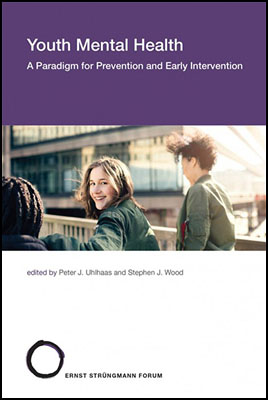Group 1: How are stigma processes related to different aspects of migration-generated diversity?
By identifying core concepts and theories that pertain to majority group members:
- Are concepts such as labeling, stereotyping, othering, devaluing, and excluding exhaustive?
- What “matters the most” to majority group members, and how does this influence stigma-related responses?
and minority groups members (i.e., immigrants and their descendants):
- Are there concepts that relate to the internalization of societal stereotypes (self-stigma), anticipatory concerns about exposure to stigma and discrimination, and coping or resistance strategies? •
- What “matters the most” to members of minority groups, and how does this influence their experience of stigma?
this group will map the intersection between stigma and migration-generated diversity and create a conceptual model that integrates and translates concepts and theories. Guiding questions include:
- What concepts have migration researchers used to describe anti-immigrant bias/prejudice and how do they map onto the concepts developed by stigma researchers?
- Has either group described processes that the other has not yet adopted? If so, what are they?
- How can the accumulated knowledge from each field be integrated to best describe the social experiences of majority and minority groups in the context of migration-generated diversity?
Group 2: How do differences in the daily lived experiences of minority and majority social groups contribute to stigma and, alternatively, processes of resilience and social cohesion?
This group will examine how cultural and normative differences between minority and majority groups become evident in “what matters most” in everyday lived experiences (e.g., accumulation of status, helping others, relationships, health, holding a job, preservation of family lineage), as these interactions may shape stigma and potential processes of social cohesion in both groups. It will seek to articulate conceptual frameworks capable of capturing congruities and incongruities in everyday expressions of deeply held and enacted cultural values between groups (e.g., from sizeable daily conflicts via differences in language and dress according to religious or gender norms, to seemingly smaller conflicts such as willingness to recycle or behavioral norms while riding public transportation). Key questions include:
- What is the process by which differences in daily lived experiences are encountered and potentially exacerbated/resolved by majority and minority group members? How do these processes change as acculturation occurs?
- Do cultural similarities in everyday practices between minority and majority groups facilitate resilience among minority groups, acceptance by majority groups, and/or social cohesion among groups?
- How does the ability/inability of minority groups to enact daily lived activities shape their sense of being a full participant of the majority group culture? Could the ability/inability of minority groups to enact their everyday lived values mitigate/exacerbate the internalization of discrimination?
Group 3: How are stigma processes reflected in (social, public, and private) policies? How do policies mitigate and/or amplify stigma processes?
This group will examine how prejudice influences policies, and how policies might increase or decrease stigma. It will look at different strategies that societies take to reduce the competitive threat immigrants ostensibly pose:
- Restrict the rights of the minority group (Esses et al. 2008): higher levels of anti‐immigrant sentiment should lead to policies that extend fewer social, economic, and political rights to immigrants (Jacobs and Herman 2009).
- Mitigate stigma processes (e.g., incentivize equal treatment, accommodate minority cultures, or increase chances for specific groups).
Several frameworks have been established to measure and compare policies (for an overview, see Helbling et al. 2017), although it has proved difficult to establish clear links between measured policies and outcome variables. This group will thus explore the complex interplay between policies and stigma processes. Guiding questions include:
- How do levels of prejudice translate into policies that directly target immigrants in destination countries?
- How does the inclusivity or exclusivity of such policies shape the experience of immigrants by either facilitating or impeding integration in social, economic, or political life? How do these policies shape experiences in everyday life?
- How do such policies affect immigrants’ abilities to shed stigma itself?
Group 4: Historical Evidence of Stigmatization and De-stigmatization: Emergence, Persistence and Dissipation
Neither migration nor reactions to migration-generated diversity are new phenomena. Indeed, the rationale behind migration does not differ across historical periods. Individuals may migrate for personal reasons (e.g., economic opportunity or reunion with loved ones), whereas others are compelled to leave due to violent conflict, natural disasters, persecution, or other forces beyond their control. History is wrought with examples of negative reactions to migration-generated diversity and negative consequences for immigrants as well as their descendants. Using historical evidence, this group seeks to understand better processes of stigmatization and de-stigmatization. Key questions include:
- What explains the emergence and persistence of stigma over time?
- What individual- and societal-level processes contribute to the dissipation of stigma over time?
- What are the parallels between contemporary opposition to migrants in Europe and North America and religious/ethnic conflict or the expulsion of minorities in prior centuries?
- How does the development of nation-states influence stigma processes in the context of migration-generated diversity?
- What factors contribute to the persistence of stigma for some groups over long periods of time? What helps explain why some groups shed stigma?
- Are there “lessons learned” that could be applied to contemporary migration to help migrants and their descendants escape or overcome stigma?
Top of page
